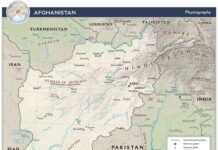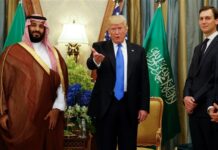Context
 The circumstances surrounding the elimination of Osama bin Laden have served to complicate the already tense US-Pakistan relations. The focal point of debate in Pakistan is on how such a raid went undetected and matters related to sovereignty. On the other hand, the concentration of criticism in US is on Pakistan’s sincerity towards fighting extremism and more seriously, complicity. In case one forgets, this all about the end game in Afghanistan and who would benefit from it. Additionally, US also has to worry about the situation in Middle East.
The circumstances surrounding the elimination of Osama bin Laden have served to complicate the already tense US-Pakistan relations. The focal point of debate in Pakistan is on how such a raid went undetected and matters related to sovereignty. On the other hand, the concentration of criticism in US is on Pakistan’s sincerity towards fighting extremism and more seriously, complicity. In case one forgets, this all about the end game in Afghanistan and who would benefit from it. Additionally, US also has to worry about the situation in Middle East.
Different Factions of Extremists
There are four broad classifications of Muslim extremists operating from the region. These are Al Qaeda, Afghan Taliban, Tehreek-e-Taliban Pakistan (TTP), and Punjabi/Kashmir related Jihadists such as Laskar-e-Tayibba (LeT). US and Pakistan views these various streams of extremists differently. For example, all parties consider Al Qaeda as irreconcilable. Furthermore, according to US conditionality, any group that maintains ties with Al Qaeda would also be excluded from Afghan reconciliation process. To assess the risks from these groups US divides them based on the ones carrying local agenda as oppose to those with global aims.
Pakistan agrees with US when it comes to Al Qaeda but differs on other groups. The country divides the Taliban based on if they target the country (Bad Taliban) or not (Good Taliban). Pakistan has maintained pressure on TTP and has conducted military operations against it but not against Afghan Taliban. Due to this position, it is assumed that Pakistan provides supports Afghan Taliban. The nation has also helped in the arrest of a number of high profile Al Qaeda leaders on its soil.
There are three main factions of the Afghan Taliban, Hizb-e-Islami under Gulbadin Hekmatyar, Mullah Omar led Quetta Shura, and the Haqqani network under Badruddin Haqqani. Pakistan has maintained that the Afghan Taliban represent a legitimate local dispensation that has to be accommodated in any future solution of Afghanistan. While Quetta Shura has distanced itself from Al Qaeda, US believes that Haqqani network is too close to Al Qaeda and extreme in its views, to be accommodated.
Numerous reports have indicated that the leadership of Quetta Shura and Haqqani network is hiding in Pakistan and until it exerts pressure on these groups, they are not going to be forthcoming as it relates to the Afghan reconciliation process. While the Quetta Shura is situated around Quetta and Kandahar area, the Haqqani network is believed to have sanctuaries in North Waziristan. This is the main reason why most of the drone attacks occur in Waziristan area and for US pressure on Pakistan to launch a military operation there.
The Debate Over the Safe Havens
Due to inadequate control of Pakistani state in FATA, since 911 most these extremist factions have cohabited in this part of the country. Figuring out the shape of correlation between various extremists groups has been a real challenge for Western intelligence organizations. However, based on investigations of different terror related events, a premise has taken hold that there is some cross-pollination occurring between these different extremist groups. For example, scrutiny of Mumbai incident has led US has concluded that LeT has evolved from being just a regional risk, to one posing a global threat like al Qaeda.
Associated with the above debate is the issue of safe havens in Pakistan. Afghanistan and India have long maintained that unless the rest and relax centers for Afghan Taliban are not eliminated in FATA, Afghan Security Forces, US and NATO would not able to improve the situation in Afghanistan. The presence of Osama in Pakistan has validated the contention that leadership of various extremists groups is hiding in Pakistan. At the same time, a dangerous question has developed: If ISI was indeed complicit in protecting Osama and to what extent did it knew about the activities of Al Qaeda and its global operations. It is bewildering to think that ISI would be involved in the killing of thousands of its own citizens and soldiers by being complicit with Al Qaeda. However, it’s more plausible to assume that a support network at the lower levels of ISI may have existed.
It is the above context, that US is requiring a much higher level of assertiveness against extremists groups operating from its soil. While US demands this, due to political and economic reasons the mood in Pakistan has shifted to focus on the reconciliation process as oppose to exerting military pressure.
Post Osama Environment
Aside from the circumstances surrounding Osama’s death, three potential outcomes could result:
- Revenge attacks would take place. The Tehreek-e-Taliban Pakistan (TTP) has already stated that they will be attacking the Pakistani state and American interests in the region with increased vigor. Al Qaeda disintegrates but associated extremists organizations take on the mission of Al Qaeda. In this case, groups such as Haqqani network and LeT could become more assertive in the future.
- With the center of gravity gone and increased pressure of unilateral US action similar to Operation Geronimo, the Haqqani’s and other factions become more amenable to peace talks. According to recent news emanating from the region, while US wants Pakistan to act against Haqqani’s, Pakistan is pushing them towards peace talks.
Pakistan fears that after it has dealt with Taliban, the focus of India and US would shift to eliminating the Kashmir/Punjabi Taliban. In the absence of progress in talks with India, it would be extremely difficult for Pakistan to suppress these groups. As in South Asia, in Middle East US is trying to distinguish groups that it can work with, and those that are too dangerous to include in any reconciliation. With the Arab Springs in full swing, there is a constant Western concern that Muslim Brotherhood, including Hamas and Hizbollah, may try to exploit the chaos and vacuum being created.
Nonetheless, as demonstrated by the recently unveiled Obama’s Middle East policy, a shift in American thinking is occurring. There is a growing realization that struggles for change in the Islamic world are no longer driven solely by extremists and religious zealots. The recent uprisings in the Arab world provide an alternative to the forces of change represented by extremists.
In the immediate future, however, the direction of this change is impacting the autocratic rulers of these countries. As the leaks of WikiLeaks exposed the duplicitous conduct of the forces of status quo in the Islamic world, and these actors recuperates from the early blows in Tunisia and Egypt, two possibilities are likely to emerge:
- The actors of status quo strongly resist the forces of change, as US shifts support towards nonviolent (progressive) groups and against radical factions.
- The actors of status quo join hands with extremist forces, and move the direction of change away from itself and towards American and Western supported forces, using growing anti-Americanism and religion.
aThus, in the immediate future US would like to speed up operations against radical forces while the actors of status quo would want to go steady. It should be noted that the reason why US has decided to end its support for the actors of status quo in the first place, is perhaps because of the inability of these players to thoroughly deal with extremist forces and instead focusing more on preserving their rule.



